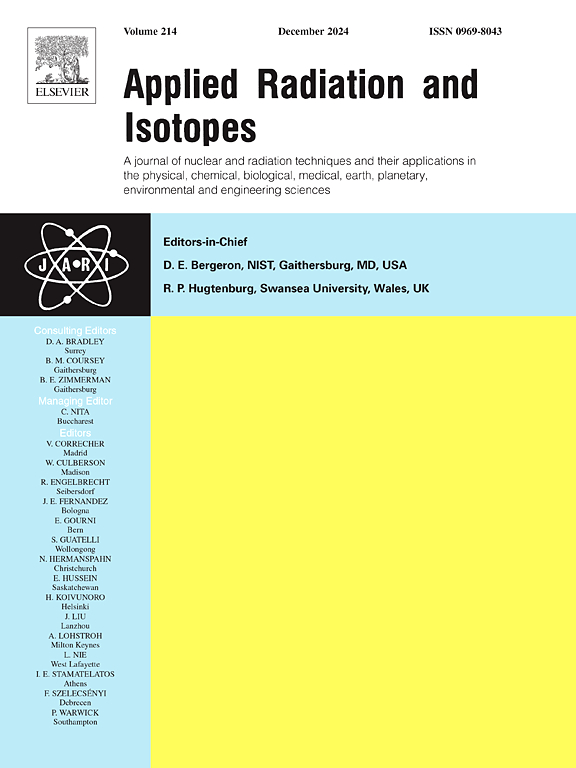研究站立式体内监测系统中个体空间排列的影响。
IF 1.6
3区 工程技术
Q3 CHEMISTRY, INORGANIC & NUCLEAR
引用次数: 0
摘要
我们开发了一种自动站立式快速扫描全身监测仪(QS-WBM),用于测量高能光子(HEP)发射器(Eϒ >200 keV)造成的体内放射性污染。监测人员站在 QS-WBM 内指定参考位置的平台上。可能会出现个体偏离监测位置的情况,从而可能导致体内含量测量的误差。位置误差在三种可能的情况下进行估算:个体的横向位移、垂直于探测器面的移动和躯干的前屈。蒙特卡洛粒子传输代码 FLUKA 用于估算成年男性辐射工作人员在不同几何位置上对选定放射性核素的效率。在距离中心线 15 厘米以内的横向移动中,无论能量大小,校准因子(CFs)的变化率约为 8%,而与参考位置的垂直移动的变化率则在 14% 到 60% 之间。这项研究有助于量化因监测期间 QS-WBM 围栏中个人位置偏差而导致的身体含量和剂量估算的不确定性。本文章由计算机程序翻译,如有差异,请以英文原文为准。
Investigation on the impact of the spatial arrangement of individuals in a standing-type in-vivo monitoring system
An automated standing type Quick Scan Whole Body Monitor (QS-WBM) has been developed for the measurement of internal radioactive contamination due to high energy photon (HEP) emitters (Eϒ >200 keV). Individuals are monitored while standing on a platform inside QS-WBM at specified reference position. Instances may occur where individuals deviate from their monitoring position, potentially leading to errors in the measurement of the body content. Positional inaccuracies are estimated in three potential scenarios: lateral displacement of the individual, movement perpendicular to the detector face, and forward bending of the torso. The Monte Carlo particle transport code FLUKA is used for estimation of efficiencies for selected radionuclides across various geometrical positions for adult male radiation workers. Approximately, 8% variation in calibration factors (CFs) is noted for lateral movements up to 15 cm from the centerline regardless of the energy, while perpendicular movements from reference position exhibit variations ranging from 14 to 60 %. This study helps in quantifying uncertainties in the estimation of body content and dose, arising from deviations in position of individuals in QS-WBM enclosure during monitoring.
求助全文
通过发布文献求助,成功后即可免费获取论文全文。
去求助
来源期刊

Applied Radiation and Isotopes
工程技术-核科学技术
CiteScore
3.00
自引率
12.50%
发文量
406
审稿时长
13.5 months
期刊介绍:
Applied Radiation and Isotopes provides a high quality medium for the publication of substantial, original and scientific and technological papers on the development and peaceful application of nuclear, radiation and radionuclide techniques in chemistry, physics, biochemistry, biology, medicine, security, engineering and in the earth, planetary and environmental sciences, all including dosimetry. Nuclear techniques are defined in the broadest sense and both experimental and theoretical papers are welcome. They include the development and use of α- and β-particles, X-rays and γ-rays, neutrons and other nuclear particles and radiations from all sources, including radionuclides, synchrotron sources, cyclotrons and reactors and from the natural environment.
The journal aims to publish papers with significance to an international audience, containing substantial novelty and scientific impact. The Editors reserve the rights to reject, with or without external review, papers that do not meet these criteria.
Papers dealing with radiation processing, i.e., where radiation is used to bring about a biological, chemical or physical change in a material, should be directed to our sister journal Radiation Physics and Chemistry.
 求助内容:
求助内容: 应助结果提醒方式:
应助结果提醒方式:


